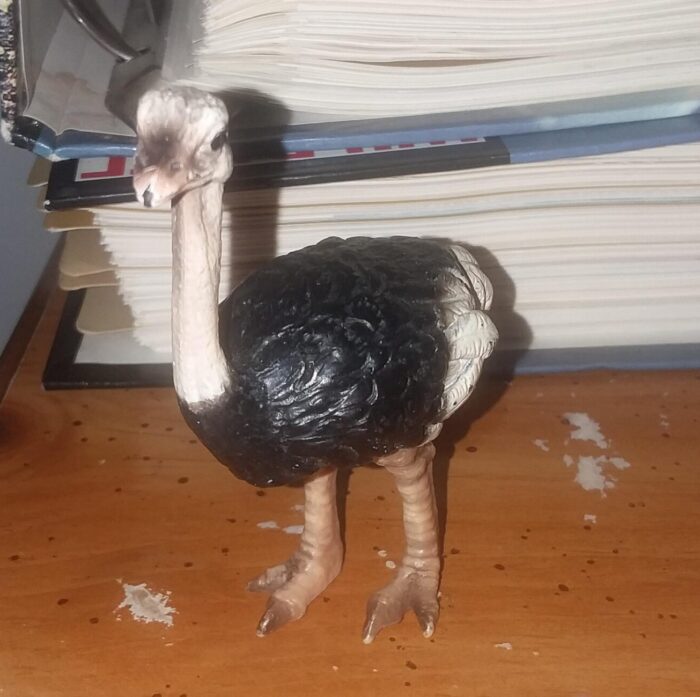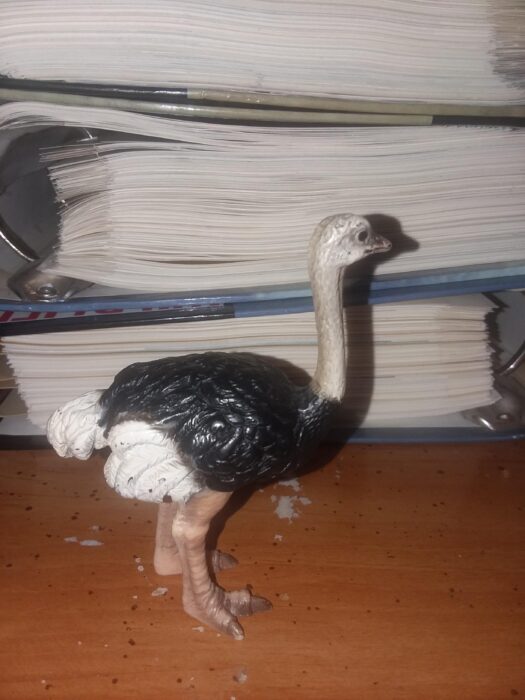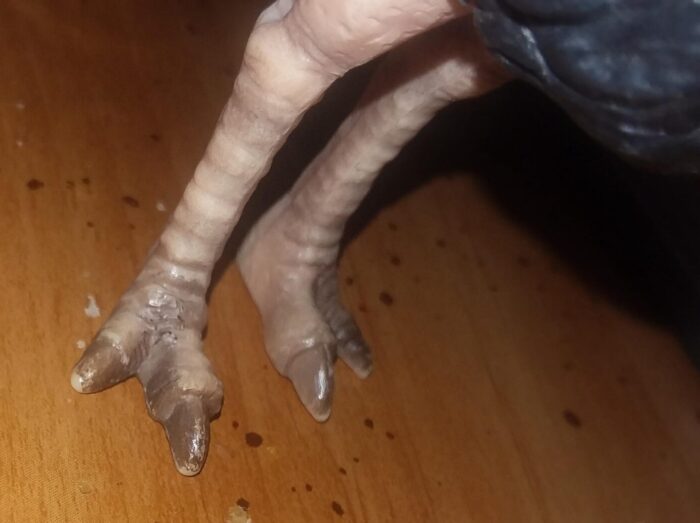Even when surrounded by amazing large cats and herbivores that can weigh several tons, the common ostrich (Struthio camelus), does not fail to impress. Ostriches are the largest of the extant land birds alongside other birds of the infraclass, ratites, like emus (Dromaius novaehollandiae) and cassowaries (Casuarius spp.). Originally placed in the same genus as the other two, the ostrich genus currently contains about 9 other species, most of which are extinct besides the Somali ostrich (Struthio molybdophanes). Relatives of the common ostrich once roamed across North Africa, the near east, and even India, tens of thousands of years ago. They are currently restricted to the Sahel, East Africa, and Southern Africa. Ostriches are superlative birds, with most adults ranging from 1.7-2.8 meters in height and 60-140 kilograms, with males being the larger sex. The largest male ostriches can exceed 150 kilograms. These animals can run very fast, with short bursts of up to 43 miles per hour. While the species’ population has declined heavily, the common ostrich is classified as ”Least Concern”, though the Arabian subspecies became extinct in 1966 and the North African subspecies is ”Critically Endangered”. These birds are omnivores, consuming plants and seeds in addition to insects and small reptiles. Ostriches swallow stones to grind their food, facilitating digestion. Predators of the common ostrich include large cats, Nile crocodiles, African hunting dogs, and spotted hyenas.

After having reviewed mammals and some fish and invertebrates, today will be a first for birds for me. I’m once again reviewing a part of Schleich’s older Wild Life Africa line and the only ostrich I have in my collection. Let’s see how well this figure has served me.

The plumage on this figure indicates that this is a male ostrich, as the female plumage is brown. The relatively slightly pinkish hue of the next and legs helps me identify this figure as a common ostrich rather than the more blue, Somali ostrich. White is also present for the tail feathers and distal end of the wings. Overall, the color scheme is quite accurate to the typical male, not much to criticize. I currently lack the knowledge on the subspecies of common ostriches to know which one this figure would best represent. The ostrich measures about 8.5cm in height, corresponding to the 1:24-1:33 scale for most mature males.

The sculpt is mostly pretty good. Nice detail is added for both the contour feathers at the torso and the down feathers on the head and neck. The feet and legs have a scaly, leathery look and the beak’s nostrils are present. What I will say is that the ostrich does fall for a very prevalent issue that Schleich products were no stranger to: the head and feet are too large.

Another issue is that the nail on the outer toe is absent in ostriches, while it’s sculpted on this figure. Fun fact: The overall reduction in toes was an adaptation to aid in running.

Overall, it seems that this figure is comparable in quality to the previous Schleich Wild Life Africa figures I’ve covered. Whilepretty old, this figure is a nice representative for the ostrich, issues with head size and feet aside. Clearly, Schleich thought this figure was good, as it lasted 11 years before being retired. So those interested in this particular figure will need to turn to secondhand sellers. However, that shouldn’t be necessary as there are honestly better figures out there. Nonetheless, it’s still nice to see figures nearly 2 decades old hold up well.
Disclaimer: links to Ebay and Amazon on the AnimalToyBlog are affiliate links, so we make a small commission if you use them. Thanks for supporting us!



